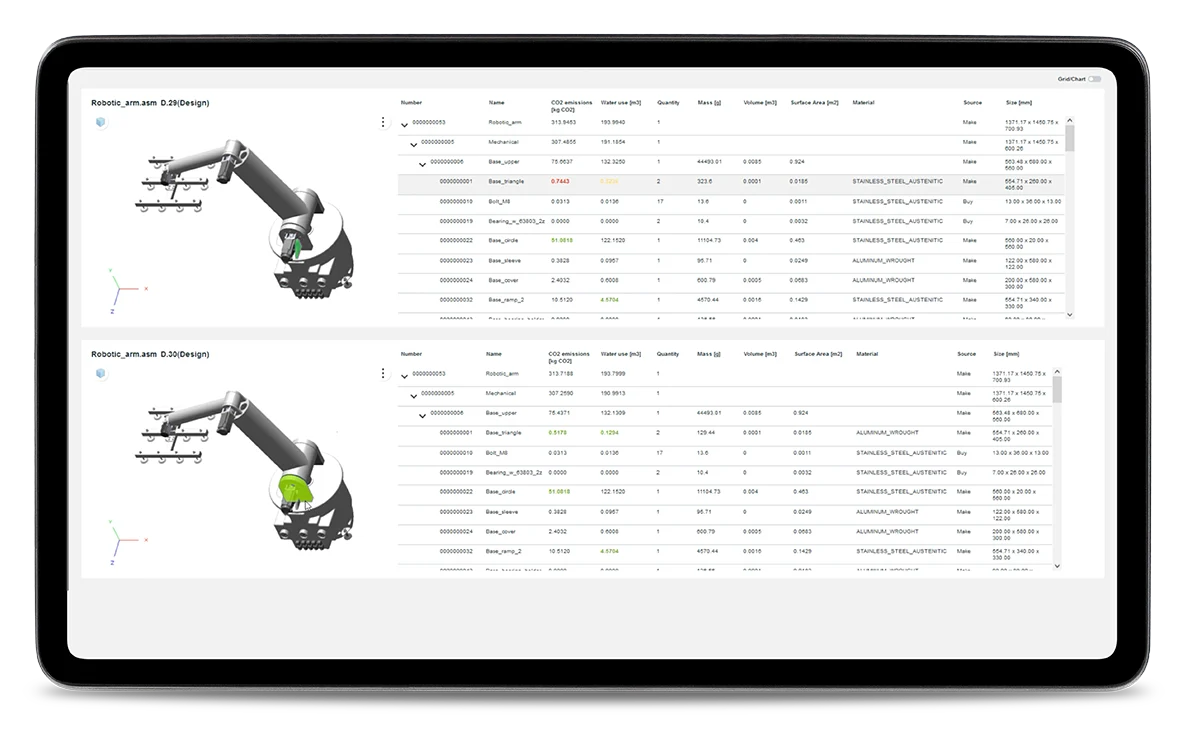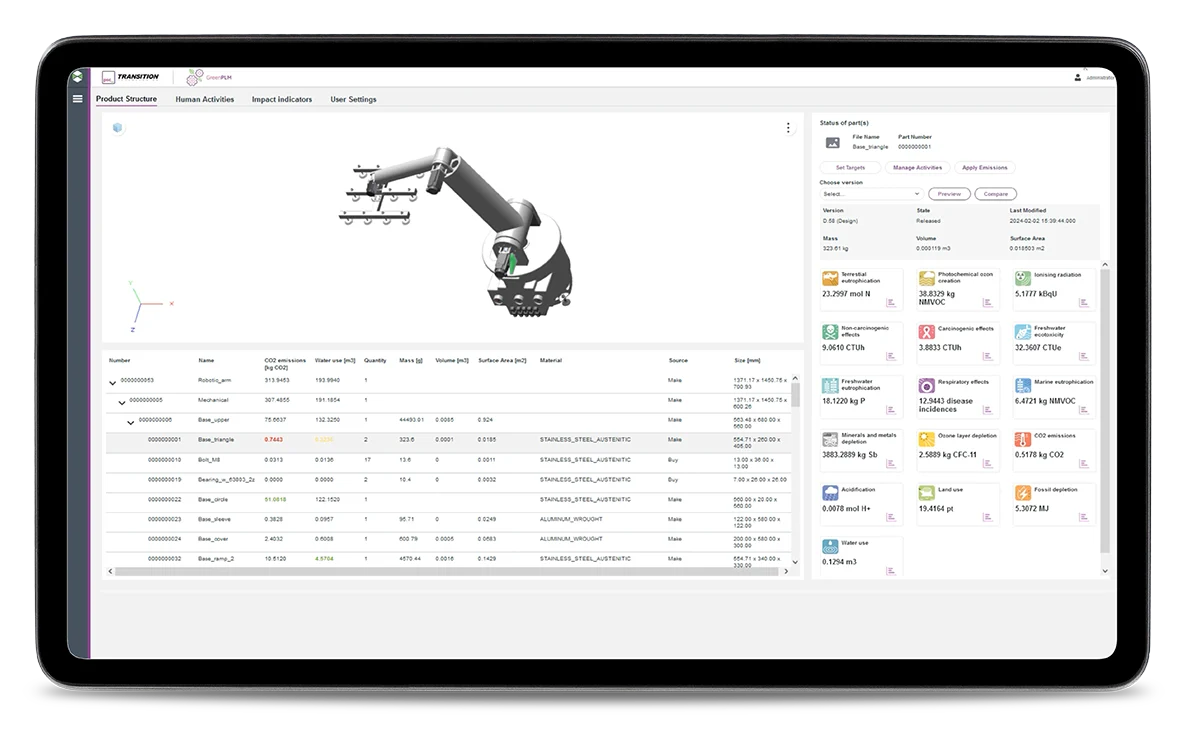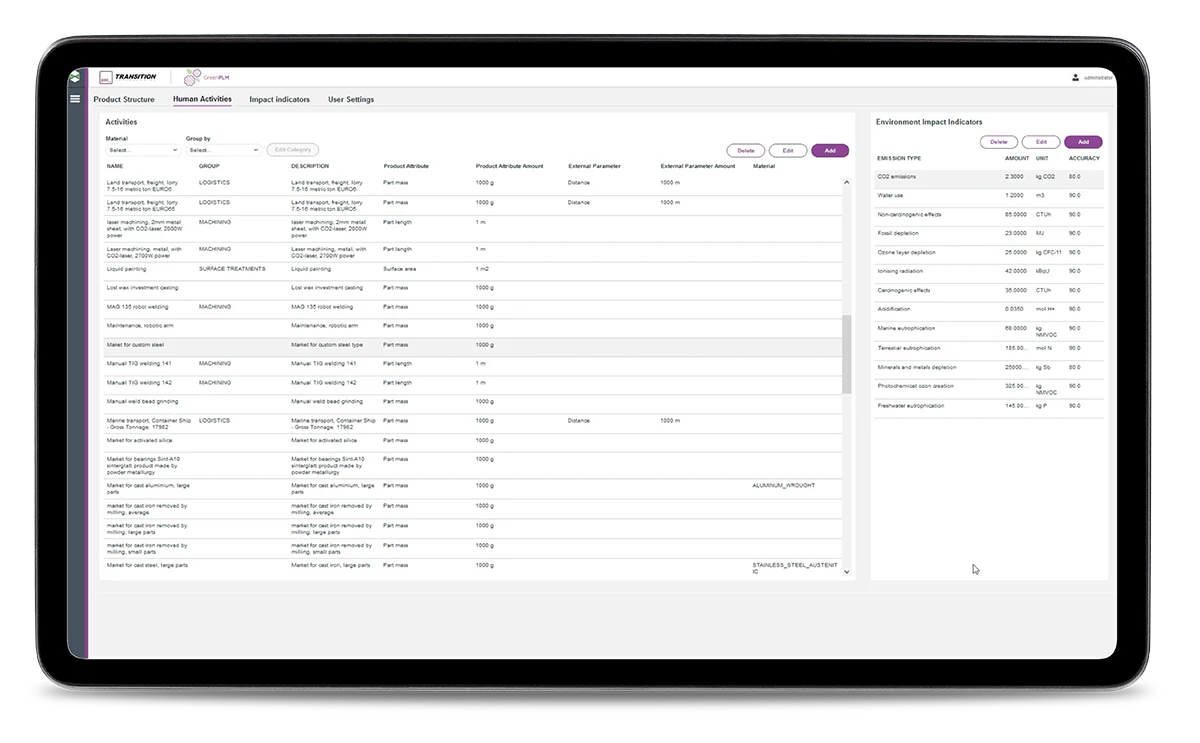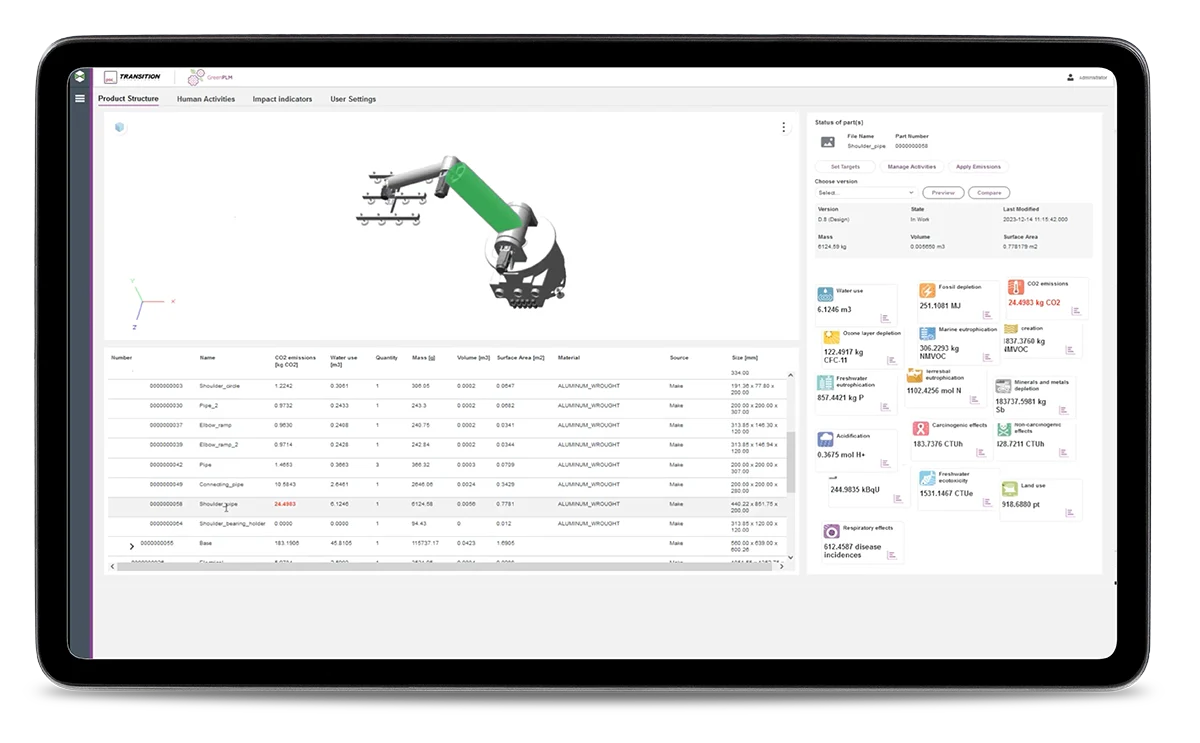_ecoPLM - zrównoważony rozwój produktu
_Wskaźniki zrównoważonego rozwoju
80% wpływu środowiskowego można określić na etapie projektowania.
50% globalnych gazów cieplarnianych powstaje w wyniku wydobycia i przetwarzania surowców pierwotnych.
Oczekuje się, że 30% redukcji emisji CO2 będzie pochodzić z etapu projektowania.
_Aspekty środowiskowe w projektowaniu - nowy paradygmat


Zrównoważony projekt produktu jest kluczowym KPI w dążeniu do projektowania produktu pod kątem zrównoważonego cyklu życia i rozwoju produktu, przy czym większość parametrów jest ustalana na etapie projektowania.
Wczesna ocena przez interesariuszy ma kluczowe znaczenie dla wstępnego przewidywania wyników podejmowanych decyzji i skutecznego raportowania w dziedzinie zrównoważonego projektowania produktów.
Pobierz ulotkę_Wyzwania związane z wpływem środowiskowym
Przewidywanie wpływu produktu na zrównoważony rozwój.
Zapewnienie zgodności z przepisami prawa.
Ustanowienie podstaw dla rozwoju produktu opartego na zrównoważonym rozwoju w perspektywie długoterminowej.
_Zwiększ potencjał zrównoważonego rozwoju w projektowaniu produktów
Twórz produkty zgodnie z naszą ścieżką by redukować ślad węglowy - Wypełnij naszą 10-minutową ankietę, a w ciągu 5 dni roboczych otrzymasz wstępny plan nawigacji po procesie projektowania produktu.
_Korzyści
_Funkcjonalności
_Poznaj możliwości ecoPLM
_FAQ
Mierniki zrównoważonego rozwoju to narzędzia wykorzystywane do oceny i dokładnego pomiaru wpływu różnych procesów na środowisko, społeczeństwo i gospodarkę. Są one niezbędne, aby pomóc organizacjom zrozumieć wpływ i skuteczność ich inicjatyw w zakresie zrównoważonego rozwoju oraz zidentyfikować obszary wymagające poprawy. Wskaźniki te mogą być stosowane w wielu sektorach, w tym w produkcji, rolnictwie, a nawet w rozwoju produktów - pozwalając na obliczanie śladu węglowego.
W kontekście rozwoju produktu, zrównoważony rozwój i wskaźniki środowiskowe odgrywają kluczową rolę. Jednym z takich narzędzi jest ecoPLM, które zapewnia ramy do oceny zrównoważonego rozwoju produktów w całym ich cyklu życia, od projektu do utylizacji. ecoPLM ocenia wpływ środowiskowy, w tym zużycie energii, zużycie materiałów, wytwarzanie odpadów i inne czynniki, które wpływają na ogólny zrównoważony rozwój produktu. Spostrzeżenia uzyskane dzięki temu podejściu można następnie wykorzystać do informowania o praktykach zrównoważonego rozwoju produktu.




